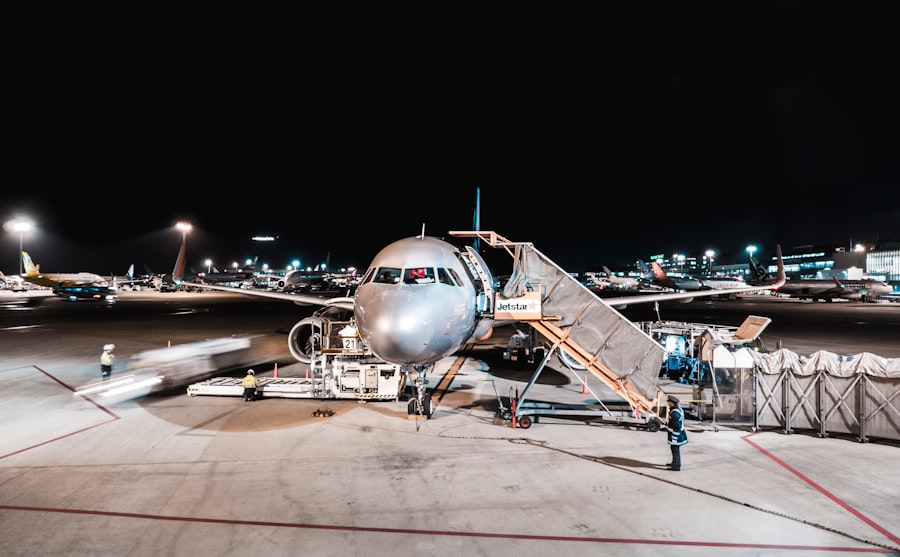
Aircraft mechanics serve as the backbone of the aviation industry, ensuring that aircraft are safe, reliable, and ready for flight. Their responsibilities encompass a wide range of tasks, from routine inspections to complex repairs. These professionals are tasked with maintaining the airworthiness of aircraft, which is critical not only for the safety of passengers and crew but also for the operational efficiency of airlines and other aviation entities.
The role of an aircraft mechanic is multifaceted; it requires a deep understanding of various systems, including engines, electrical systems, hydraulics, and avionics. In addition to technical skills, aircraft mechanics must possess strong problem-solving abilities and attention to detail. They often work under pressure, especially when dealing with tight schedules or unexpected mechanical issues.
The aviation industry is heavily regulated, and mechanics must adhere to strict guidelines set forth by organizations such as the Federal Aviation Administration (FAA) in the United States. This regulatory framework ensures that all maintenance practices meet safety standards, thereby protecting the integrity of the aviation system as a whole. The importance of their role cannot be overstated; without skilled mechanics, the entire aviation infrastructure would be at risk.
Key Takeaways
- Aircraft mechanics play a crucial role in ensuring the safety and airworthiness of aircraft in the aviation industry.
- Training and education requirements for aircraft mechanics typically include a combination of formal education, on-the-job training, and certification programs.
- Job opportunities for aircraft mechanics are expected to grow in the coming years, with a high demand for skilled professionals in the field.
- Aircraft mechanics in the USA can expect competitive salaries and benefits, with opportunities for advancement and specialization.
- Specializations and certifications in areas such as avionics, powerplant, and airframe maintenance can enhance the career prospects of aircraft mechanics.
Training and Education Requirements for Aircraft Mechanics
Education and Training
Most programs culminate in an Associate’s degree in aviation maintenance technology or a related field. The curriculum typically includes both classroom instruction and hands-on training, covering essential topics such as aircraft systems, maintenance practices, and safety protocols.
Gaining Practical Experience
In addition to formal education, aspiring aircraft mechanics must also gain practical experience. This is often achieved through internships or apprenticeships that allow students to work alongside experienced professionals in real-world settings.
Certification and Continuous Education
After completing their training, candidates must pass a series of examinations to obtain their Airframe and Powerplant (A&P) certification from the FAA. This certification is crucial as it validates their skills and knowledge, enabling them to perform maintenance on a wide range of aircraft. Continuous education is also important in this field; mechanics must stay updated on new technologies and regulations to maintain their certification and ensure they are equipped to handle modern aircraft.
Job Opportunities and Career Growth in the Aircraft Maintenance Field

The demand for skilled aircraft mechanics is robust and continues to grow as the aviation industry expands. With an increasing number of commercial flights and private air travel, airlines and maintenance organizations are constantly seeking qualified personnel to ensure their fleets remain operational. Job opportunities can be found in various sectors, including commercial airlines, cargo carriers, government agencies, and private aviation companies.
Additionally, many mechanics find employment with maintenance repair organizations (MROs) that provide services to multiple clients. Career growth in this field can be significant for those who are willing to pursue additional training and certifications. Many aircraft mechanics start their careers in entry-level positions but can advance to roles such as lead mechanic, maintenance supervisor, or even management positions within an organization.
Some may choose to specialize in specific areas such as avionics or engine repair, which can lead to higher-paying positions. The aviation industry also offers opportunities for mechanics to transition into related fields such as quality assurance or safety inspection, further broadening their career prospects.
Salary and Benefits for Aircraft Mechanics in the USA
| Experience Level | Average Salary | Health Benefits | Retirement Benefits |
|---|---|---|---|
| Entry Level | 50,000 | Medical, Dental, Vision | 401(k) matching |
| Mid-Level | 60,000 | Medical, Dental, Vision | 401(k) matching, Pension |
| Senior Level | 70,000 | Medical, Dental, Vision | 401(k) matching, Pension, Stock Options |
The salary for aircraft mechanics in the United States varies based on factors such as experience, location, and the type of employer. According to data from the Bureau of Labor Statistics (BLS), the median annual wage for aircraft and avionics mechanics was approximately $66,000 as of May 2022. However, those working in metropolitan areas or for larger airlines may earn significantly more.
For instance, mechanics employed by major airlines often receive higher salaries due to the complexity of the aircraft they service and the rigorous demands of their jobs. In addition to competitive salaries, many aircraft mechanics enjoy a comprehensive benefits package that may include health insurance, retirement plans, paid time off, and opportunities for overtime pay. Some employers also offer tuition reimbursement for further education or training, which can be an attractive incentive for those looking to advance their careers.
The combination of a solid salary and benefits makes this profession appealing to many individuals seeking stable employment in a growing industry.
Specializations and Certifications for Aircraft Mechanics
As technology continues to evolve within the aviation sector, aircraft mechanics have the opportunity to specialize in various areas that align with their interests and career goals. Common specializations include avionics technicians who focus on electronic systems within aircraft, such as navigation and communication equipment. Others may choose to specialize in airframe repair or engine maintenance, each requiring specific knowledge and skills tailored to those systems.
Certifications play a crucial role in enhancing an aircraft mechanic’s qualifications and marketability. Beyond the foundational A&P certification, there are numerous additional certifications available through organizations like the National Institute for Certification in Engineering Technologies (NICET) or specific manufacturers like Boeing or Airbus. These certifications often require passing exams and demonstrating proficiency in specialized areas, which can lead to increased job opportunities and higher earning potential.
Work Environment and Job Duties of Aircraft Mechanics

Aircraft mechanics typically work in hangars or on airport ramps where they have direct access to the aircraft they service. The work environment can vary significantly depending on the employer; some mechanics may work primarily indoors in climate-controlled hangars while others may find themselves outdoors exposed to various weather conditions. Regardless of the setting, safety is paramount; mechanics must adhere to strict safety protocols to protect themselves and others while performing their duties.
The daily responsibilities of an aircraft mechanic can be diverse and demanding. They conduct pre-flight inspections to ensure that all systems are functioning correctly before takeoff. This includes checking engines, landing gear, fuel systems, and electrical components.
When issues are identified, mechanics troubleshoot problems using diagnostic tools and repair techniques.
Documentation is another critical aspect of their job; mechanics must maintain accurate records of all maintenance performed on each aircraft to comply with regulatory requirements.
Challenges and Advancements in the Aircraft Maintenance Industry
The aircraft maintenance industry faces several challenges that can impact both operations and workforce dynamics. One significant challenge is the rapid pace of technological advancements within aviation. As aircraft become more sophisticated with advanced materials and systems, mechanics must continuously update their skills through ongoing training and education.
This requirement can create a skills gap if training programs do not keep pace with industry changes. Another challenge is workforce shortages that have emerged due to an aging population of experienced mechanics retiring from the field without enough new talent entering to replace them. This shortage can lead to increased workloads for existing staff and potential delays in maintenance operations.
However, advancements in technology also present opportunities for improvement within the industry. The integration of digital tools such as predictive maintenance software can enhance efficiency by allowing mechanics to identify potential issues before they become critical problems.
Future Outlook for Aircraft Mechanics in the USA
The future outlook for aircraft mechanics in the United States appears promising as the aviation industry continues its recovery from disruptions caused by global events such as the COVID-19 pandemic. According to projections from the Bureau of Labor Statistics, employment for aircraft and avionics mechanics is expected to grow by approximately 11% from 2022 to 2032, which is faster than the average for all occupations. This growth is driven by an increase in air travel demand and a corresponding need for maintenance services.
Moreover, as airlines invest in newer fleets that incorporate advanced technologies like electric propulsion systems or automation features, there will be a growing need for mechanics who are trained in these areas. The emphasis on sustainability within aviation may also lead to new job opportunities focused on maintaining eco-friendly aircraft designs. Overall, those entering the field can expect a dynamic career path filled with opportunities for advancement and specialization as they contribute to one of the most critical sectors of modern transportation.
If you are interested in learning more about careers in the USA as an Aircraft Mechanic or Service Technician, be sure to check out the article “Top 10 Highest Paying Jobs in the USA” on careersintheusa.com. This article provides valuable information on the top-paying jobs in the country, including opportunities in the aviation industry. It can help you gain insight into the earning potential and job outlook for aircraft mechanics and service technicians in the USA.
FAQs
What is the role of an aircraft mechanic and service technician?
Aircraft mechanics and service technicians are responsible for inspecting, maintaining, and repairing aircraft to ensure they are safe and in proper working condition.
What are the typical job duties of an aircraft mechanic and service technician?
Typical job duties include conducting regular inspections, performing maintenance and repairs, troubleshooting issues, and ensuring compliance with safety regulations and standards.
What are the educational requirements for a career as an aircraft mechanic and service technician?
Most employers require aircraft mechanics and service technicians to have a high school diploma or equivalent, as well as completion of a certified aviation maintenance program. Some employers may also require FAA certification.
What skills are important for a career as an aircraft mechanic and service technician?
Important skills for this career include attention to detail, problem-solving abilities, mechanical aptitude, physical strength and stamina, and the ability to work in a team.
What is the job outlook for aircraft mechanics and service technicians in the USA?
According to the Bureau of Labor Statistics, the job outlook for aircraft mechanics and service technicians is projected to grow 5% from 2020 to 2030, which is about as fast as the average for all occupations.



